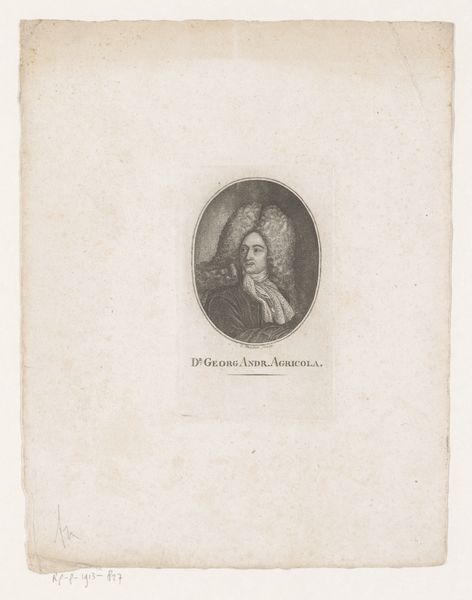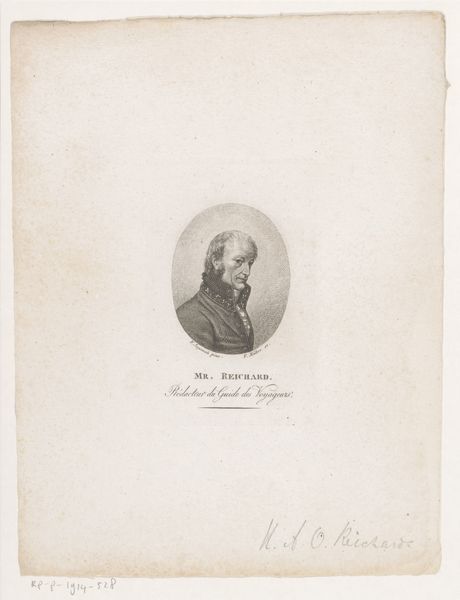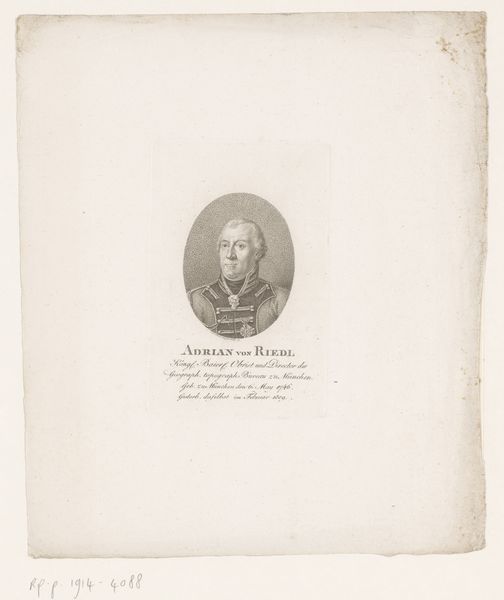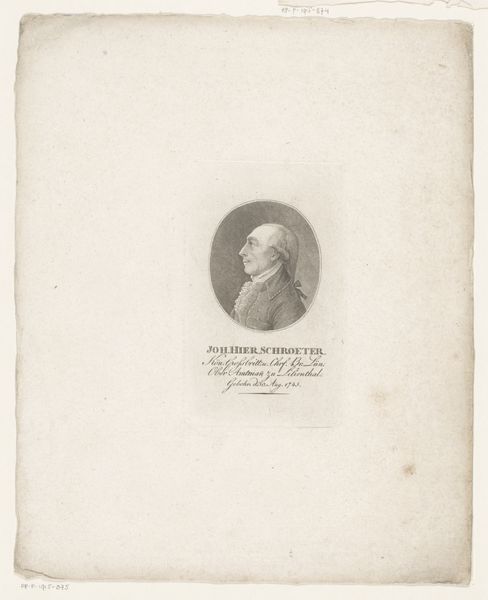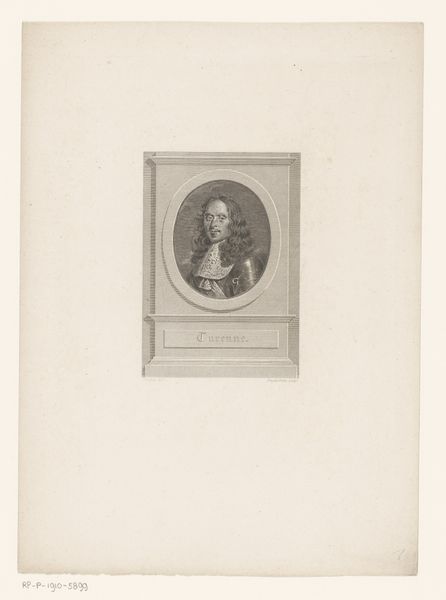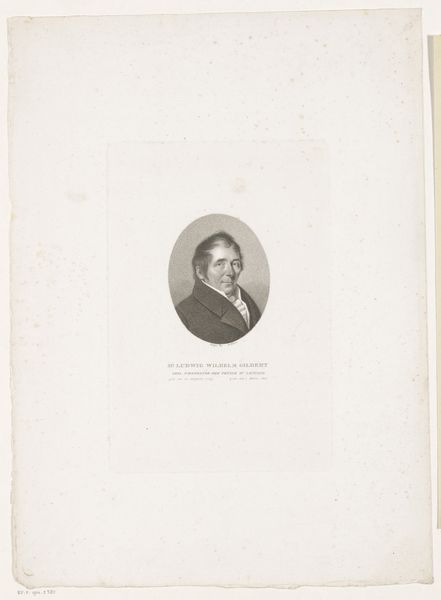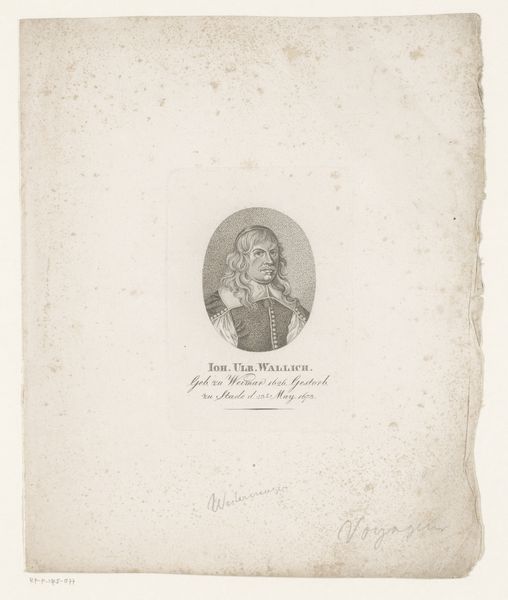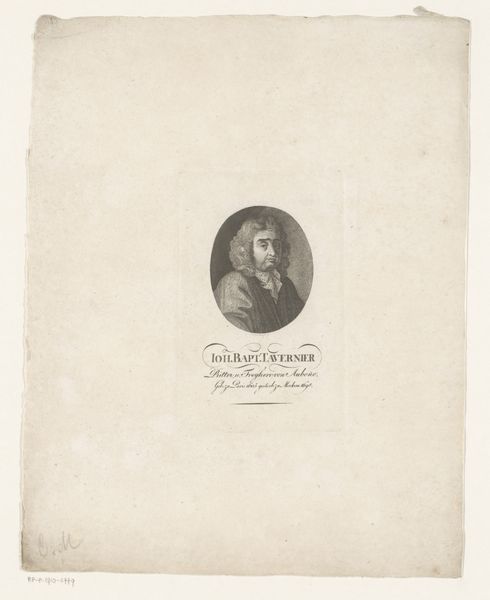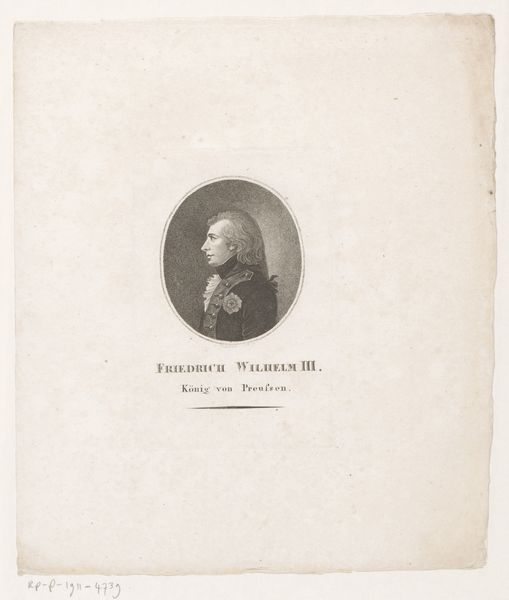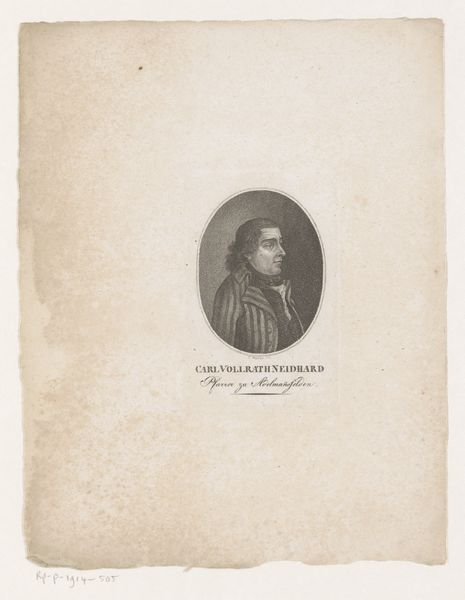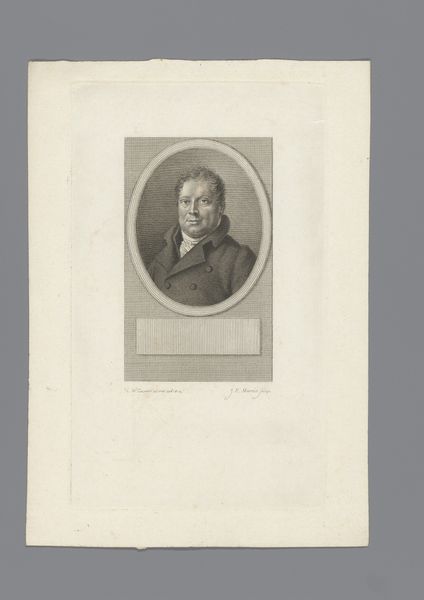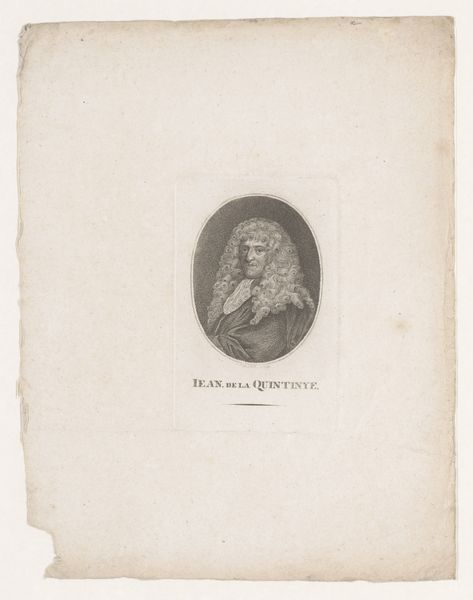
print, engraving
#
portrait
#
neoclacissism
#
aged paper
#
toned paper
#
light pencil work
#
pale palette
# print
#
old engraving style
#
personal sketchbook
#
academic-art
#
engraving
Dimensions: height 135 mm, width 91 mm
Copyright: Rijks Museum: Open Domain
Editor: This is a portrait of Abraham Gotthelf Kaestner, dating roughly from 1776 to 1824, created by Johann Christian Ernst Müller. It's an engraving on what looks like toned paper. It’s such a small, contained image, almost like a cameo, but there's something intense in his gaze. How do you interpret this work? Curator: It's fascinating to consider the portrait in its historical moment. The late 18th and early 19th centuries were a period of intense social and intellectual upheaval, with Neoclassicism rising in popularity. How does this restrained aesthetic relate to the revolutionary spirit simmering beneath the surface? Editor: I hadn’t thought about that connection. Curator: Consider the subject: Kaestner was a prominent mathematician. Neoclassicism, with its emphasis on reason and order, reflected the values of the Enlightenment and the rise of scientific thinking. Does the formal portrait style almost act to legitimize or even monumentalize Kaestner and his contributions? Editor: That makes sense. So the portrait isn’t just a likeness, but also a statement about the importance of intellectual figures in that era? Curator: Precisely! And it raises questions about representation: who got to be represented, and how? In what ways does this seemingly objective portrayal uphold the dominant social structures? And where are the women, and people of color, scientists, and intellectuals in the period? Editor: I see. The portrait becomes a point of entry for understanding power dynamics and cultural values of the time. Curator: Exactly. Each work is a portal! By asking who is included and excluded we get to see a deeper and wider framework for understanding identity, gender, race, and politics. What was something you took away from our chat? Editor: The portrait becomes not just a picture of an individual, but of an historical and cultural power construct! Thanks.
Comments
No comments
Be the first to comment and join the conversation on the ultimate creative platform.
